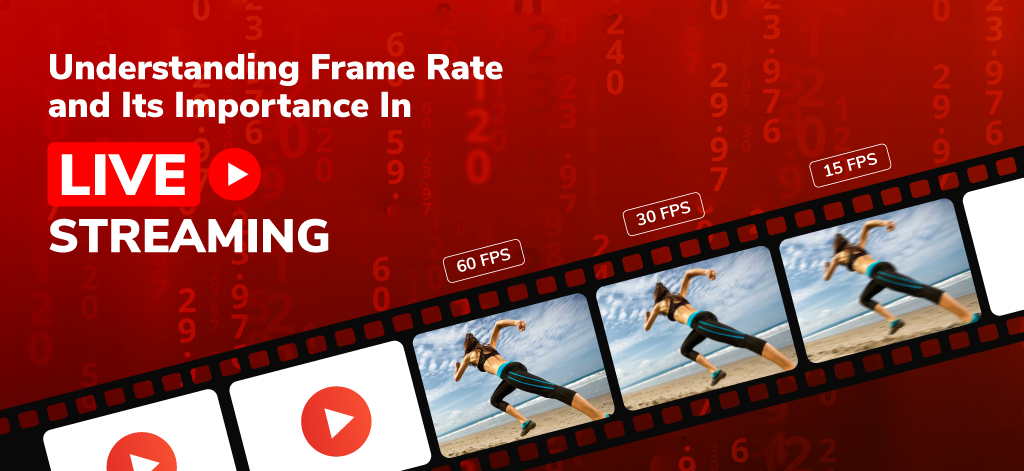To understand the process of HD live streaming and how live streaming services work, many technical terms need to be understood first. Some terms that are important for live webcasting include bitrate, transcoding, encoding, video ingestion, etc. In this blog, we’re going to focus on a technical term that is relevant not only for live video streaming and live webcasting but video in general – frame rate.
We’re going to go through what the term means and the role it plays for videos and then we’re going to explore why it is essential for HD live streaming and its significance for live webcasting in general.
Frame Rate – A Simple Overview
- Videos, in a basic definition, are a collection of images that are played one after another to create the illusion of motion. The rate at which these images are played consecutively is known as the frame rate, as each image is referred to as a frame on the video. Frame rate is denoted by FPS which stands for Frames Per Second.
- Any set of images that play over 12-14 fps are perceived to be in motion by the human mind. Standard FPS rate of videos for most formats is usually 24 fps though it is also common to have a video with higher frames per second, ranging from 30 fps to 60 fps.
- Frame rate is also an important aspect when it comes to shooting video as a higher frame rate allows the video to look smoother and capture more detail.
- The frame rate also affects the style and viewing experience of the video. They are more significant when certain specific effects like slow-mo or motion blur are required to be incorporated in the video.
- As an example, we previous stated movies are usually shot at 24 fps which allows for a more realistic look of the video while for something like a live stream of a sporting event or the recording of a video game, a higher frame rate should ideally be used in order to make the motion look smooth while maintaining the details of the picture.
Why is it Important in Live Streaming?
- Since frame rate is an integral part of videos in general, it should come as no surprise that it also plays a significant role in HD live streaming and a lot of it depends on the nature of the live stream. Here are some broad pointers about fps for live video streaming and live streaming services.
- When the live stream concerns something fast-paced like a sports event streaming or music events streaming, then a stream with a higher frame per second will produce better video output as the fast-moving motion of the event can be better captured using more frames per second.
- For live streams where the event isn’t high paced like a church service or an annual general meeting webcast, high fps isn’t typically required as most of the motion can be adequately captured by a lower fps as well.
What is The Best FPS?
As we previously discussed, there is no “best” frame rate, and it all depends on your needs for the live stream. If your live stream would deal with faster motion which is critically important for the viewing experience, you should use a higher fps. However, a standard fps of 24 is still sufficient for most “normal” videos and live streams.






